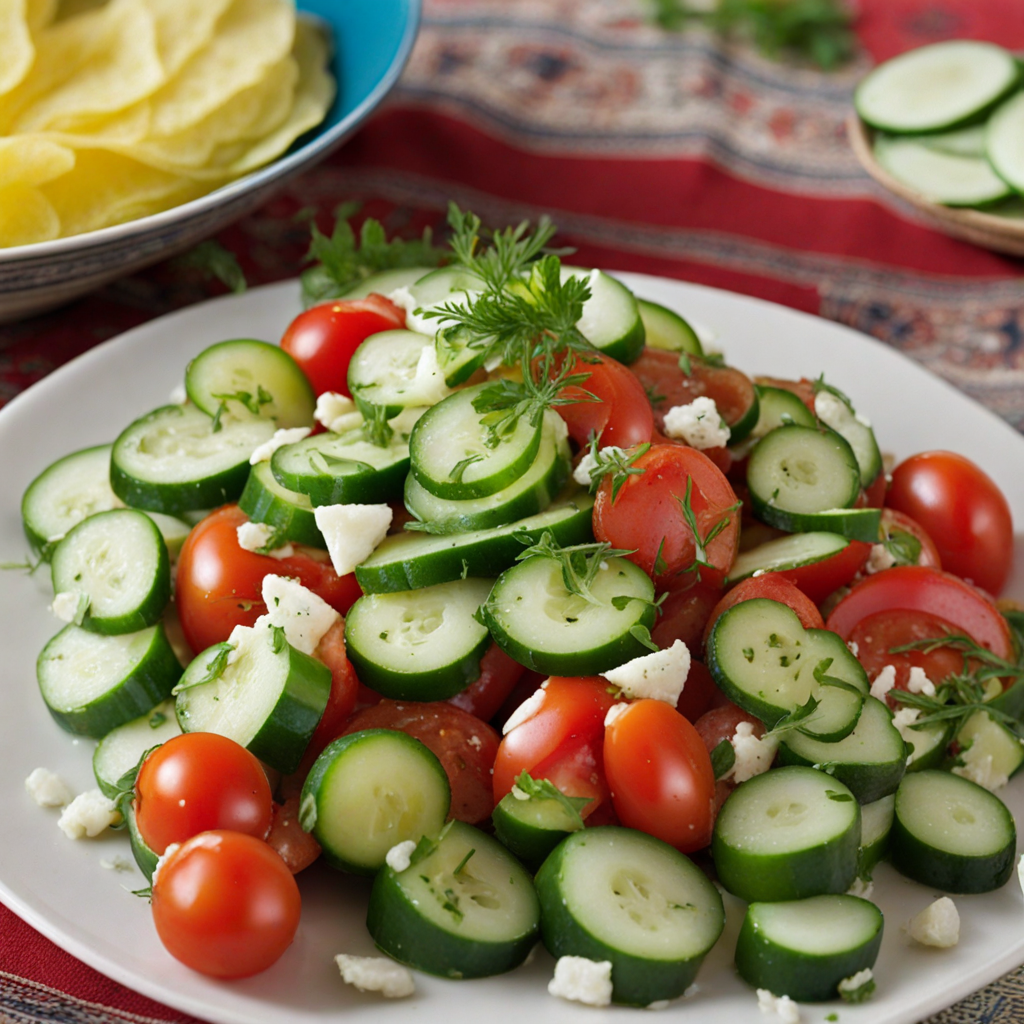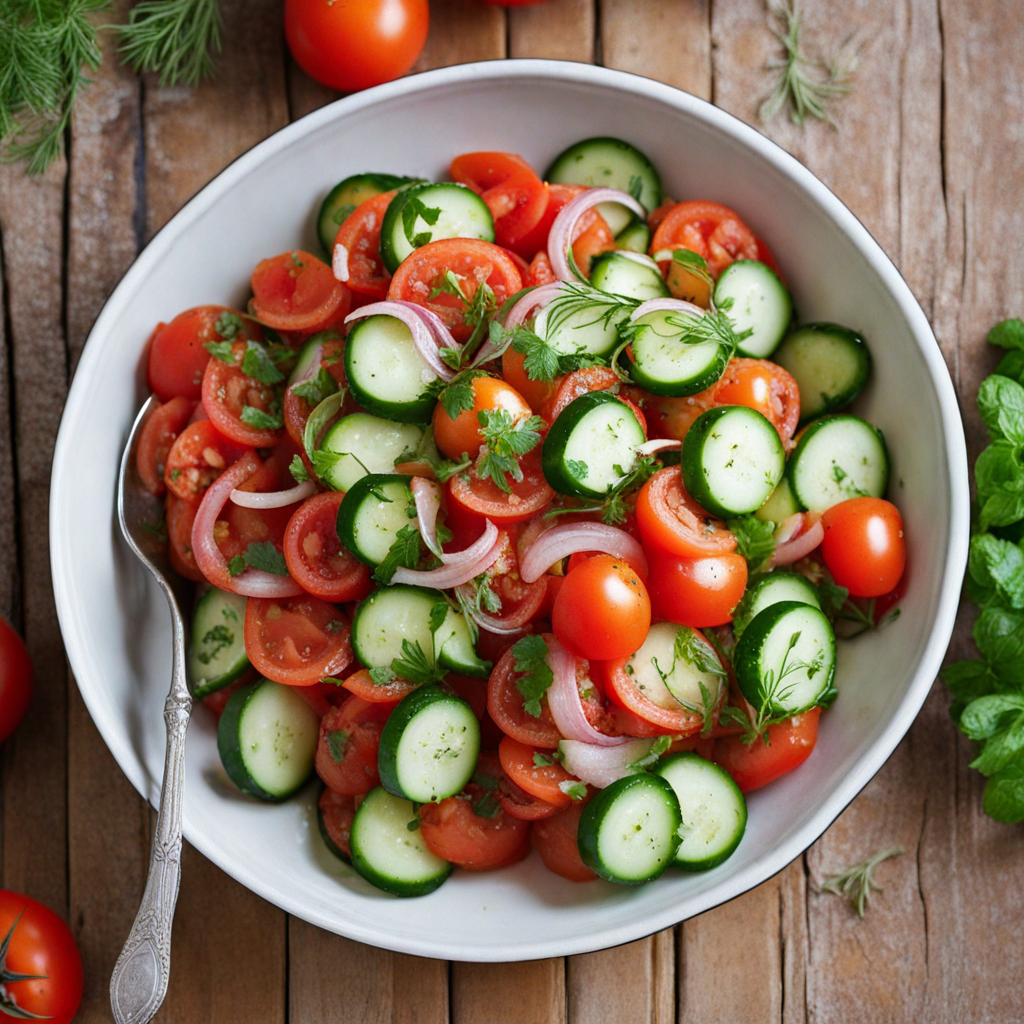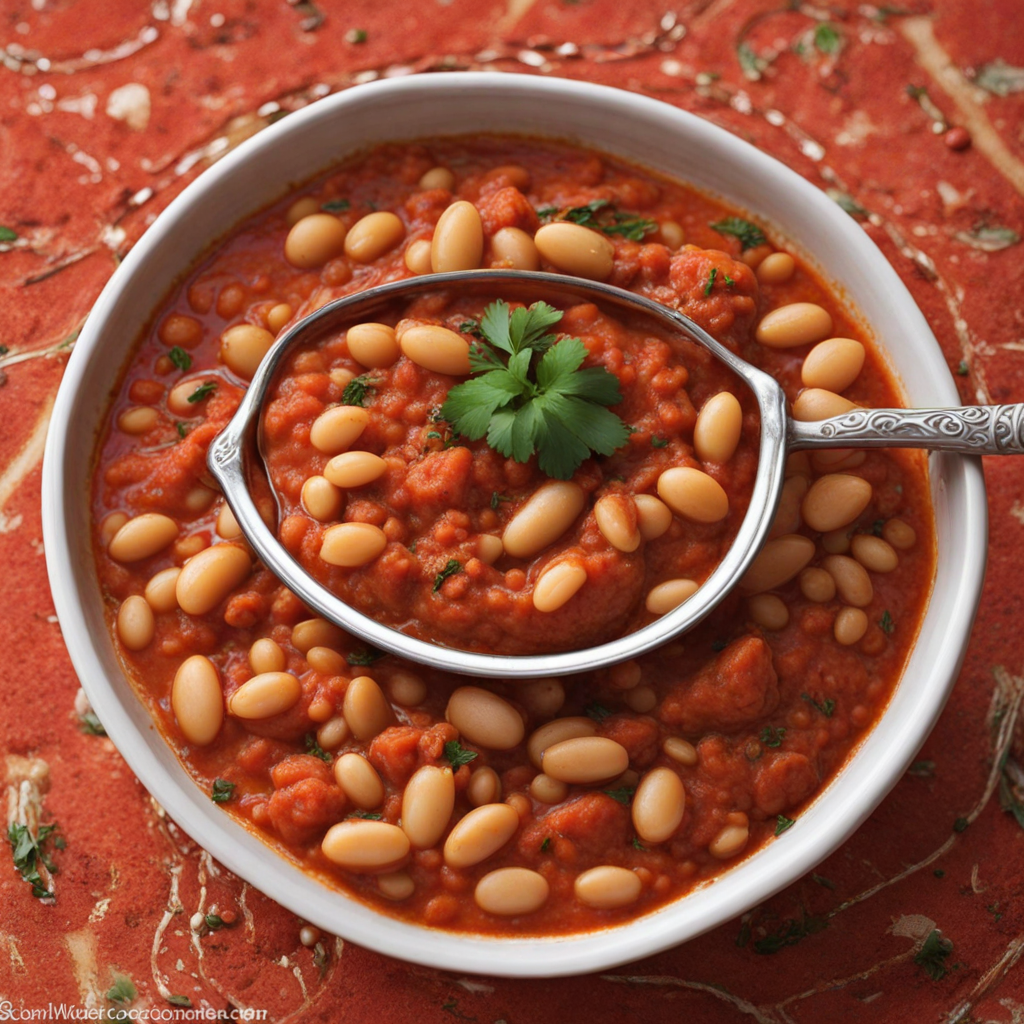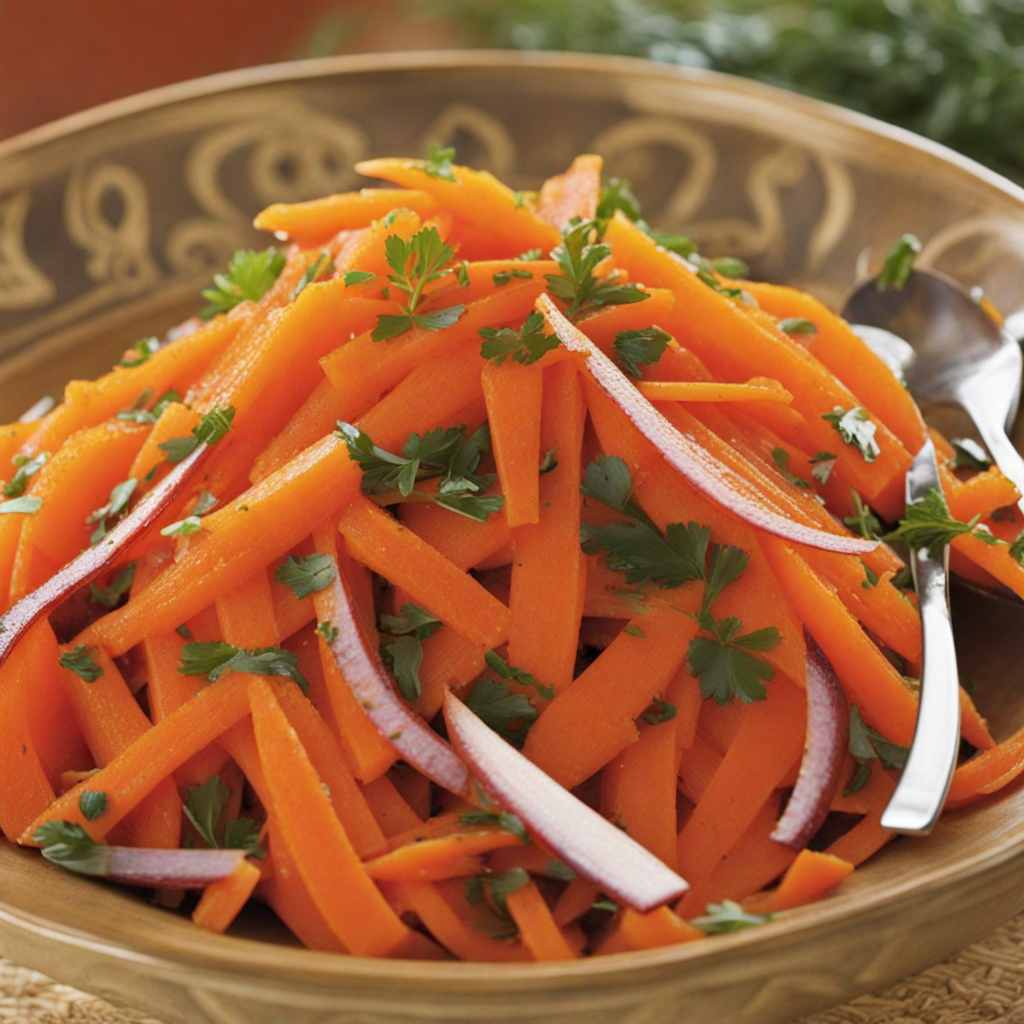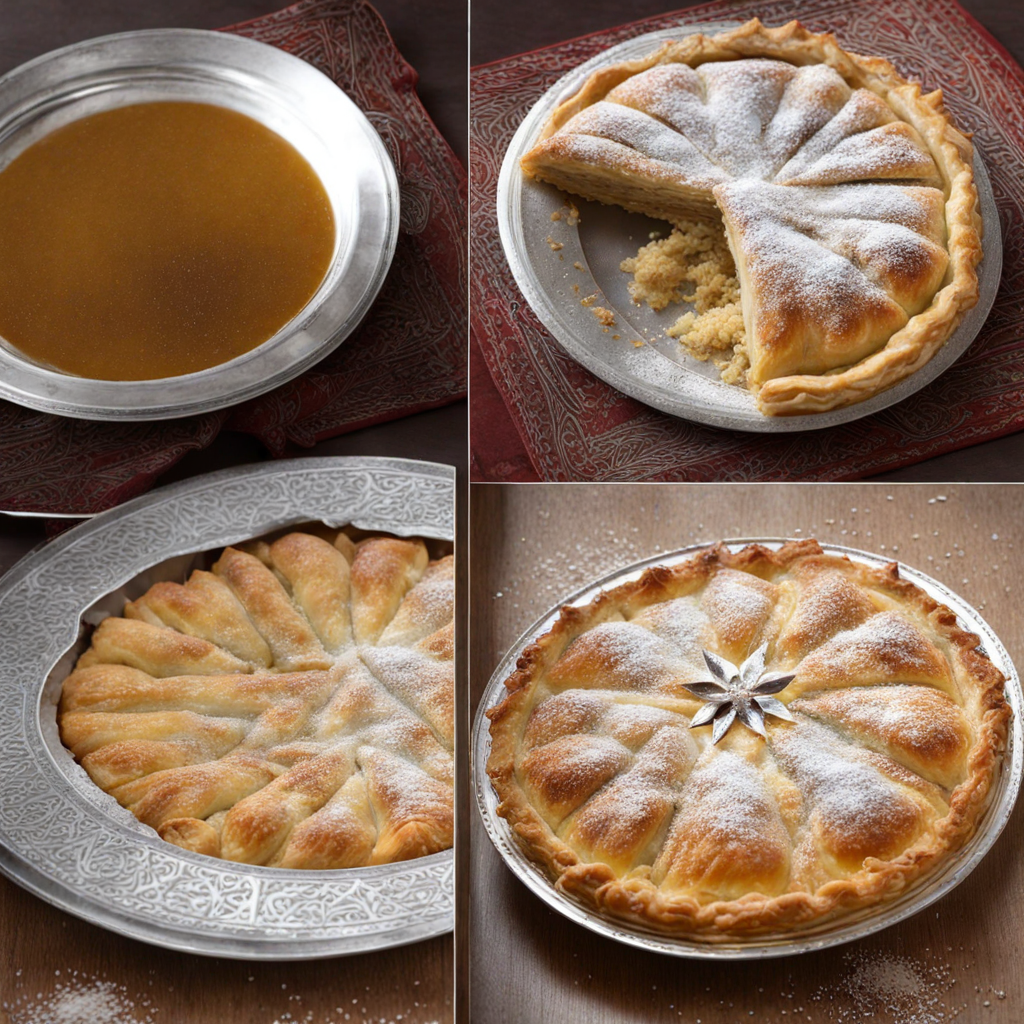Tomato and Cucumber Salad
Tomato and Cucumber Salad, a refreshing dish hailing from Morocco, embodies the vibrant flavors and colors of the Mediterranean region. This salad features ripe, juicy tomatoes and crisp cucumbers, both of which are staples in Moroccan cuisine. The tomatoes are usually chosen for their sweetness and depth of flavor, while the cucumbers add a satisfying crunch that balances the softness of the tomatoes. The combination creates a dish that is not only visually appealing but also packed with refreshing taste that awakens the palate. To elevate the salad, it is often seasoned with a drizzle of olive oil, a squeeze of fresh lemon juice, and a touch of salt, enhancing the natural flavors of the vegetables. Fresh herbs like parsley or mint can be added for an aromatic touch, providing a fragrant backdrop that complements the freshness of the ingredients. Sometimes, a sprinkle of spices such as cumin or paprika may be introduced, giving the salad an additional layer of complexity and a hint of warmth that is characteristic of Moroccan dishes. Served chilled, Tomato and Cucumber Salad is perfect as a light appetizer or a side dish alongside grilled meats and tagines. It’s an ideal way to enjoy the bounty of summer produce while experiencing the essence of Moroccan culinary traditions. Each bite is a celebration of simplicity, highlighting how fresh, quality ingredients can come together to create a dish that is both nourishing and delicious, inviting everyone to savor the delightful marriage of flavors.
How It Became This Dish
The History of سلطة طماطم وخيار (Tomato and Cucumber Salad) in Morocco #### Origins سلطة طماطم وخيار, or tomato and cucumber salad, is a refreshing staple in Moroccan cuisine. Its origins can be traced back to the rich agricultural heritage of the region, where fresh vegetables have always held a prominent place in the diet of the Moroccan people. The Mediterranean climate, characterized by hot summers and mild winters, is conducive to growing a variety of vegetables, including tomatoes and cucumbers, which flourish in Moroccan soil. Tomatoes, believed to have originated in western South America, were introduced to Europe in the 16th century following the Spanish conquest of the Americas. They found their way to North Africa through trade and exploration, quickly becoming a popular ingredient in local cuisines. Cucumbers, on the other hand, have been cultivated for thousands of years, believed to have originated in India. They too made their way through trade routes to North Africa, where they became staples in various dishes. #### Cultural Significance In Moroccan culture, food is more than mere sustenance; it is a means of connection, celebration, and identity. The tomato and cucumber salad embodies these cultural nuances. Typically served as a mezze or side dish, it is often accompanied by bread and other traditional foods during meals. This salad is not just a dish; it represents the Moroccan approach to food—simple, fresh, and vibrant. Eating habits in Morocco are deeply rooted in hospitality. When guests arrive, it is customary to offer them a spread of dishes, including سلطة طماطم وخيار, demonstrating generosity and warmth. The bright colors of the salad—the deep reds of the tomatoes against the crisp greens of the cucumbers—symbolize the richness of Moroccan culinary tradition. The salad is often seasoned with olive oil, lemon juice, and spices like cumin, enhancing its flavor and nutritional value, while also reflecting the Moroccan penchant for bold tastes. #### Development Over Time As Morocco navigated through its history—marked by various dynasties, invasions, and trade exchanges—the culinary landscape evolved, leading to the incorporation of diverse ingredients and techniques. The introduction of spices from the East, along with the influence of Berber, Arab, and Andalusian cuisines, significantly shaped the way salads were prepared and served. During the Almoravid and Almohad dynasties in the 11th to 13th centuries, the Moroccan palate began to expand, influenced by the cross-cultural exchanges that occurred through trade routes. This period saw an increase in the use of aromatic herbs and spices, which would eventually find their way into salads. The tomato and cucumber salad, while simple, became a canvas for showcasing these flavors. The addition of herbs such as parsley and cilantro, along with a sprinkle of cumin, is a testament to this culinary evolution. In the 20th century, Moroccan cuisine experienced a renaissance as chefs and home cooks began to explore and reinterpret traditional dishes, integrating contemporary culinary techniques while honoring the past. The growing popularity of Mediterranean diets in the West also brought renewed attention to Moroccan salads, including سلطة طماطم وخيار. This salad became a symbol of healthy eating, appealing to those seeking lighter, fresher options in their diet. Furthermore, as global awareness of food security and sustainability grew, the emphasis on local and seasonal produce became increasingly significant. In Morocco, this shift aligned perfectly with the existing agricultural practices, where farmers have historically relied on seasonal crops. The salad’s reliance on easily accessible ingredients—tomatoes and cucumbers—reinforces the importance of locality in Moroccan cuisine. #### Modern Interpretations and Global Influence Today, سلطة طماطم وخيار is not just confined to Moroccan homes; it has transcended borders and is found in Mediterranean restaurants and Moroccan eateries around the world. With an increasing interest in healthy and plant-based diets, this salad has gained popularity among diverse populations, adapting to various palates while retaining its essence. Modern interpretations of the salad may include variations that incorporate other vegetables like bell peppers, radishes, or even avocados, reflecting the global influences and the fusion of culinary traditions. Additionally, the rise of food photography and social media has contributed to the aesthetic presentation of the salad, making it a favorite among food enthusiasts and influencers. Bright, colorful images of سلطة طماطم وخيار are often shared, showcasing not only the dish itself but also the cultural stories that accompany it. Moreover, as the world grapples with issues of sustainability, the emphasis on locally sourced ingredients has seen a resurgence in interest in traditional dishes like this salad. Many chefs and home cooks alike are now prioritizing the use of organic, locally grown produce, celebrating the rich agricultural heritage of Morocco. #### Conclusion سلطة طماطم وخيار stands as a testament to the enduring legacy of Moroccan cuisine. Its simplicity belies a complex history where cultural exchanges, agricultural practices, and culinary innovations have all played a role in shaping this delightful dish. It embodies the values of hospitality, health, and sustainability, making it a vital part of Moroccan identity and an enduring favorite both locally and globally. As we continue to explore the connections between food and culture, the tomato and cucumber salad reminds us of the importance of fresh ingredients, shared meals, and the stories that bring us together. In every bite, one can taste the history of Morocco, a confluence of flavors and traditions that have stood the test of time. Whether enjoyed in a bustling market in Marrakech or at a dinner table in a distant land, سلطة طماطم وخيار remains a vibrant symbol of Moroccan culinary heritage.
You may like
Discover local flavors from Morocco


